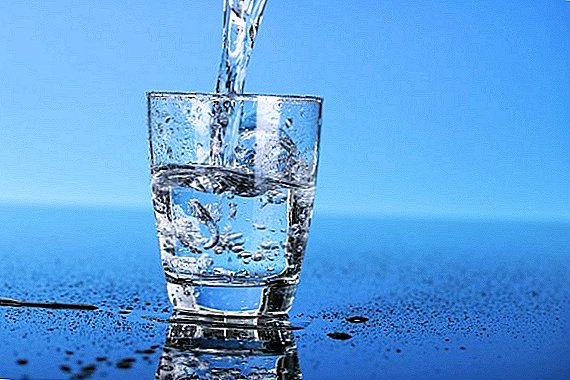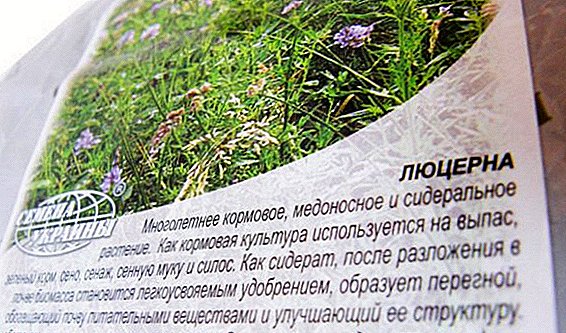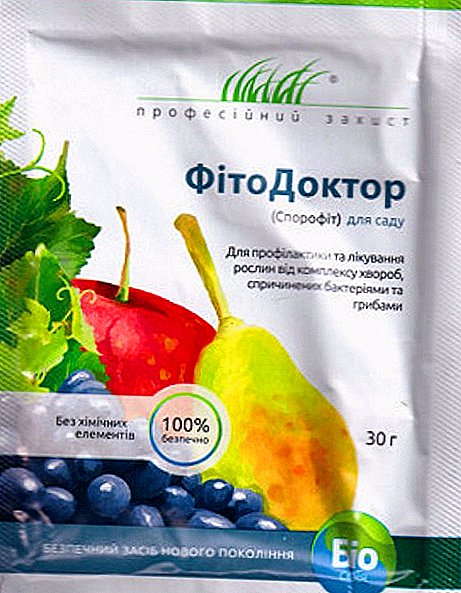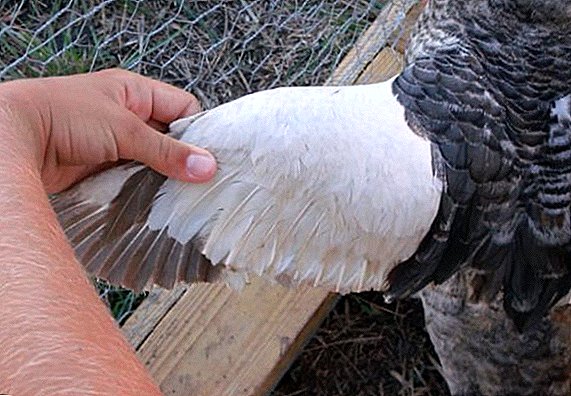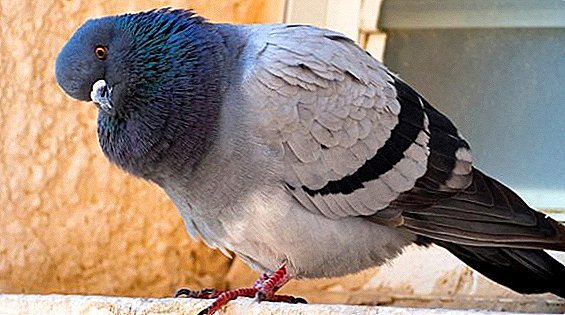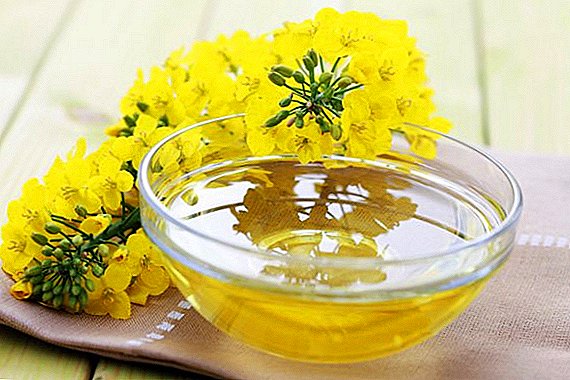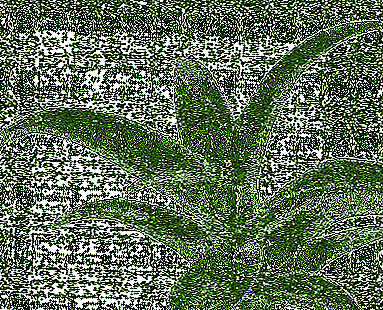
Aloe is a wonderful plant. Its healing properties have been known since the 1st century AD. Over time, people have learned not only to borrow aloe from nature, but also to grow at home.
What you need to know to natural medicine was always at hand?
Growing conditions at home
Aloe belongs to succulents, and therefore has the general properties of this group of plants:
- the ability to endure drought for a long time due to the accumulation of moisture in its leaves and stems;
- love of light;
- the difference in care requirements in summer and winter;
- ease of engraftment during transplantation and reproduction.
 In winter, aloe is enough to water once a monthIts temperature should not exceed 12-14 degrees. Otherwise, the plant will stretch, and at close proximity to heat sources (batteries, stoves, stoves) can begin rot from the roots.
In winter, aloe is enough to water once a monthIts temperature should not exceed 12-14 degrees. Otherwise, the plant will stretch, and at close proximity to heat sources (batteries, stoves, stoves) can begin rot from the roots.
In the spring a gradual awakening of aloe is recommended. increased watering (up to 1 time per week), making a brighter light. But do not forget that abrupt change of conditionth environment can be destructive for aloe.
In the summer, especially in extreme heat, aloe needs spraying. Young and actively developing plants are subject to transplantation once a year, and after they reach the age of 5 years once every three years. The optimal time for transplanting is from February to deep autumn. Later, aloe will be in a state of rest or winter rest, and you should not touch it.
When transplanting, it is better to choose a low but spacious container. Give preference to pots of natural materials. For example, clay. Since in the wild, aloe grows in heat and dryness, then you should take care not to destroy the flower with excess stagnant water. For this, the bottom of each pot must be filled. drainage material (expanded clay, tile or brick chips).
If the soil in the transplanted pot is very dry, then it should be watered in a day or two. After transplanting aloe vera and slightly thickening the soil, you should not get involved in watering. Tumble dry land and leave alone for 5-7 days. To learn how to plant properly, read here.
How to multiply at home?

If you use aloe juice for medicinal and cosmetic purposes, then you have to cut off the lower leaves. The plant loses its decorative appearance, and therefore there is a need to have several such plants. You can, of course, buy ready-made flower in the store, but aloe is enough unpretentious and transplanting and reproduction, if you do not make serious mistakes.
Should know and abide by fundamental rules, and then it’s easy to create a new plant with your own hands:
- from cuttings;
- from the appendix;
- from a separate sheet;
- from seeds.
At home, aloe blooms rarely and get the seeds from it in a natural way is quite difficult. But well afford to buy a bag of aloe seeds in the flower department.
Cuttings
One of the fastest ways to get an adult matured plant is reproduction by cuttings. The stalk that you plan to plant for breeding aloe should be about 10 cm. Long. It is more convenient to cut it off from the main plant with a sharp one (so as not to mash the cut plant tissue), but with a short knife in order to reduce the risk of grazing adjacent stems and leaves.
The resulting cutting is powdered at the site of the cut with coal dust and dried (infused) for 2-3 days at room temperature, avoiding bright light. Then, in an already prepared container with light, loose soil at the bottom (3/4 of the height) and wet sand from above (1/4), they are planted to a depth of 1 centimeter slightly tilted. If there are several cuttings, then the distance between them should be 4-5 centimeters.
Remember: never plant cuttings in clean water. Otherwise decay he is provided. It is not necessary to force the engraftment of young shoots of bright lights and dressings. Acceptable temperature 20-25 degrees.
With moderate soil moisture and light loosening along the edges of the aloe root and it can be a month or a little more carefully transplanted to a permanent place in another pot.
 Seed breeding
Seed breeding
The method of growing aloe from seeds is the longest, but plants can immediately get the whole plantation. It is recommended to take dishes for germinating seeds flat and low. Time to plant is better to choose spring and summer. In this case, it will be possible to put the dishes for germination in a greenhouse and not to spray to maintain constant humidity.
The seeds are laid out no closer than 1.5 cm from each other, slightly pressing into the ground. The soil itself is necessarily pre-sanitized by heating or a solution of potassium permanganate and consists, as in the case of cuttings, of sand and barren land. Wet soil with seeds sprinkled on a centimeter of dry clean sand. Sufficient temperature for germination of aloe seeds - 22-25 degrees.
The first shoots will appear in 2-4 days. In the future, the sprouts dive and transplanted into more bulk capacity. But be prepared that the adult plant will have to wait. about 2 years.
 We multiply shoots
We multiply shoots
A healthy adult plant will certainly give young shoots coming from the bottom of the rosette. Such shoots thicken aloe and will soon weaken it, taking away food and living space. But in the new place they will take root well and form an independent plant.
It is desirable that in the separation of already formed "kids" as possible less damaged their roots. Carefully clean the base of the aloe from the ground, try to do without a knife, only with your own fingers. If this succeeds, then all that remains is to plant such an escape into a separate place.
If the "baby" firmly attached to the mother plant, then carefully cut it off, trying to save his roots. The open cut is sprinkled with coal powder, similar to propagation by cuttings, and after aging for 2-3 days they are planted in a moist (not wet!) Substrate, trying to fill the voids. About planting and transplanting aloe, read here.
It is important to leave a growth point above the ground surface.
Watered a little bit a week. It will be possible to feed the young individuals only when they finally take root and give new leaves.
Even when the young sprout is completely detached from the roots, it is able to survive and grow. For this, planting methods that are similar to planting by cuttings are applicable (dusting with coal, drying for several days and subsequent planting).
 How to grow aloe leaf?
How to grow aloe leaf?
The most problematic is to apply the method of breeding aloe from his leaf. But it happens that the whole plant is so damaged that there is nothing left except for individual leaves. It is possible to try and get good results.
The lowermost leaves are usually cut off from a capable plant. If there is no choice, then any one will do. The cut is clean and even. It is made with the help of a knife. Then it is possible to process the cut-off areas with coal (dust, powder) and slightly press the sheet. Follow the same recommendations as when planting cuttings, but plant in the substrate deeper - 2.5-3 centimeters. It is sometimes advised in the case of individual leaves to cover with a glass jar to maintain humidity and temperature. And protect from direct sunlight until it finally takes root.
How to propagate aloe apex?
It happens that aloe starts due to excess moisture or drafts rot below the trunk. It would be more reasonable to save the crown and try the following method of reproduction - cutting with the tip. The main condition - how can cut off the wet and rotten part faster, preventing the disease from spreading to the healthy top of the plant. It is best to make it a few inches higher from the site of the lesion. Then the treatment with coal powder, a short drying and planting in another place with a healthy, moderately moist soil, followed by engraftment.
The principle of "it is better to underfill than to pour" is especially important for such a recovering plant.
Peculiarities of care after reproduction
 After you have planted the seedlings in separate pots, and they have pleased you with new leaves, you can pamper them with fertilizers. Now the usual watering can be done more often (once a week). But Do not forget about the moderation of moisture in order to avoid rotting and death of the plant. We wrote about plant diseases in this article.
After you have planted the seedlings in separate pots, and they have pleased you with new leaves, you can pamper them with fertilizers. Now the usual watering can be done more often (once a week). But Do not forget about the moderation of moisture in order to avoid rotting and death of the plant. We wrote about plant diseases in this article.
It is better to cultivate aloe in spring or summer so that the flower has enough sun and heat for full recovery and subsequent care for winter rest.
Having not only a beautiful plant on your windowsill or on the balcony, but a pharmacy for rejuvenating and healing the body is rarely refused. Care for your aloe, please him the right care and it will grow to your joy.
A photo
See more photos below:






